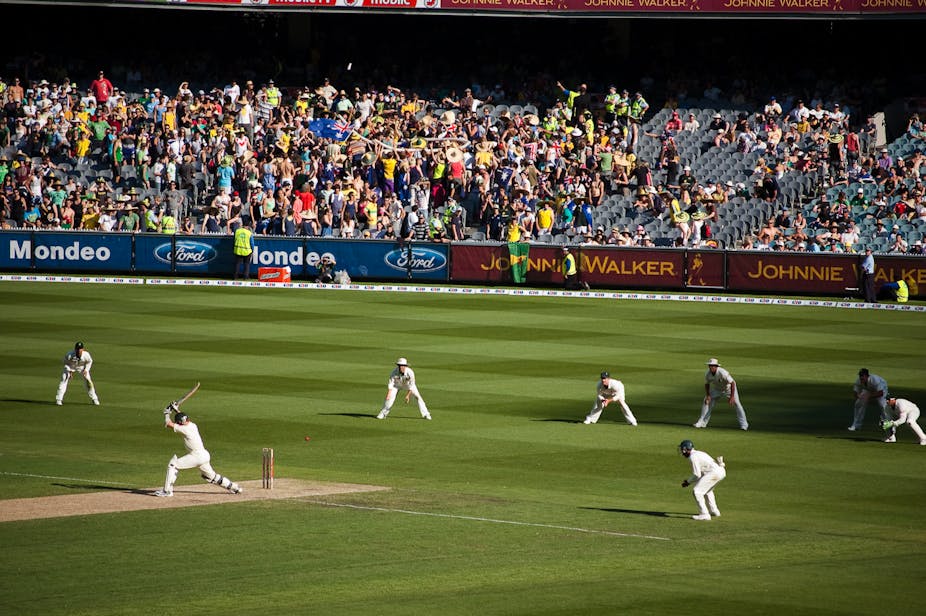Is watching sport on television a right of cultural citizenship in Australia? Sport, we are regularly told, is integral to Australian culture. If you are interested in becoming a citizen, the current advisory document Australian Citizenship: Our Common Bond observes:
We are proud of our reputation as a nation of ‘good sports’ … Throughout our history, sport has both characterised the Australian people and united us.
Sport’s national and cultural status ensures that the government affords some protection of your television viewing rights dating from the analogue era. The recent Sport on Television and Convergence Reviews considered the future of free-to-air sport coverage on the anti-siphoning list. Since the introduction of pay TV in 1995, this list has required the broadcast rights to specified major sport events to be offered first to free-to-air television.
Despite pressure from both sports organisations and pay TV providers who say the anti-siphoning list distorts the media sport market, featherbeds “old” media, and prevents them from maximising economic returns, it has survived without major surgery.
Reforms, such as adding or removing certain sports, introduction of tiers with different requirements in terms of comprehensiveness and “liveness”, uses of multi-channelling, and stronger anti-hoarding provisions to deter commercial TV game playing, have refreshed rather than euthanised it.
Indeed, the list will apply to emerging media, such as IPTV, as long as they, like pay TV, are accessed only by a minority with the monetary and technological capacity.
No major political party has been game to touch the principle of protecting certain televised sports or to challenge seriously the Sport on Television Review’s conclusion:
Sport is central in Australian society and the objective of ensuring free public access to events of national importance and cultural significance remains a relevant public policy objective.
So watching sport on television remains largely unchallenged as a right of “cultural citizenship”. This means that some sport events, such as the Melbourne Cup, Olympic Games, FIFA World Cup and the AFL and NRL Grand Finals, are regarded as part of the national “cultural estate”.
For the foreseeable future, nobody will be able to enclose the most desirable parts of the media sport landscape, and deprive entry to those without the necessary means, as has occurred in the UK with the Premier League and in New Zealand with its coverage of the All Blacks.
As with other public goods and entitlements, the privileged cultural status of sport does not go unchallenged. Most obviously, sport remains a male-dominated institution, with the vast majority of the most powerful and best remunerated owners, administrators and athletes being men. Their “inherited” privilege is reproduced and, indeed, reinforced by sports television.
Thus, the anti-siphoning list is dominated by men, especially cricket, motorsports and the football codes. The list is designed to protect access to the most popular men’s sports events, rather than enhance the position of aspiring sports (women’s sports among them). The one female-dominated sport on the list, netball, has been rather keen to get off it, given the premium sale price that goes with exclusivity.
The anti-siphoning list (some parts of which, like Wimbledon and the US Open, are not actually Australian) also tends to enshrine the predominance of traditional Anglo sports at the expense of those that may have greater appeal to a more diverse population.
Here the most prominent instance is that of association football (soccer), which has been historically disparaged in Australia as “wogball”, associated with so-called “ethnics”. The current iteration of the country’s main domestic soccer competition, the A-League, has struggled to get a free-to-air presence, despite soccer’s popularity as both a participant and spectator sport (among both men and women), and the rising profile of the men’s national team. Although a new broadcast rights contract includes limited, mostly delayed, free-to-air live coverage on SBS, televised soccer in Australia remains dominated by pay TV.
A striking case in point is Australia’s hosting of the Asian Football Confederation (AFC) Asian Cup in January 2015. This is a very big event - its claimed television reach (though not its projected audience) is 2.5 billion people. It also has substantial strategic and financial support from the Federal, New South Wales, Victorian, Queensland and Australian Capital Territory Governments.
However, at present – even in the warm afterglow of the Asian Century White Paper, with its emphasis on “Football Diplomacy” – the Asian Cup will be shown exclusively live on FOXSPORTS. In contrast, another major sport event with strong Asian involvement held in Australia (along with New Zealand) in 2015, the listed International Cricket Council (ICC) World Cup, will be shown on both pay and free-to-air television in the host country.
So, the Asian Cup is, for the moment, not officially deemed to be an event of “national importance and cultural significance”. It is hard to imagine that, in the Asian Century, communications minister Stephen Conroy will fail to notice this among the many ironies surrounding sport, the media and cultural citizenship in Australia.

